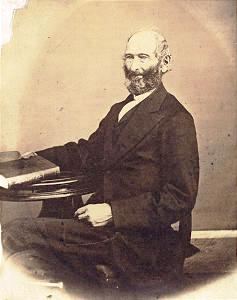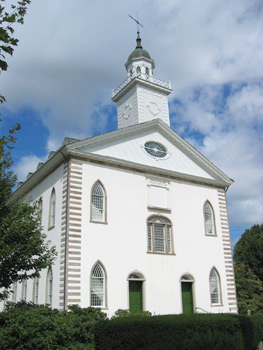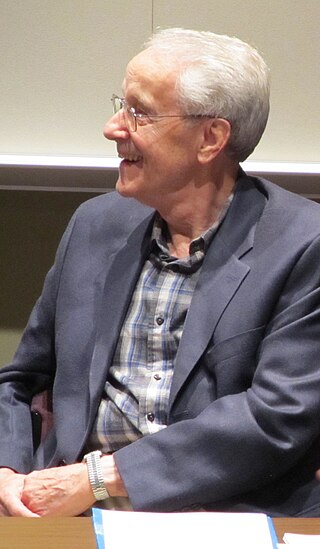Related Research Articles

The Church of Christ, informally called Hedrickites and the Church of Christ (Temple Lot), is a denomination of the Latter Day Saint movement headquartered in Independence, Missouri, on what is known as the Temple Lot. The nickname for members of the church comes from the surname of Granville Hedrick, who was ordained as the church's leader in July 1863. Unlike the Church of Jesus Christ of Latter-day Saints (LDS Church) and Community of Christ, the Temple Lot church rejects the office of prophet or president, being instead led by its Quorum of Twelve Apostles. The church also rejects the doctrines of baptism for the dead and celestial marriage promulgated by the Utah-based LDS Church, as well as the Doctrine and Covenants and Pearl of Great Price. While once avidly engaged in dialogue with other Latter Day Saint factions, the church no longer has any official contact with any other organization. It is notable for its sole ownership of the Temple Lot, which it has held for nearly 150 years. As of 2013, membership is 7,310 members in 11 countries. Most of the members live in the United States, but there are parishes in Canada, Mexico, Honduras, Nigeria, Kenya, Democratic Republic of the Congo, Malawi, Tanzania, India, Ethiopia, and the Philippines.

The Latter Day Saint movement is the collection of independent church groups that trace their origins to a Christian Restorationist movement founded by Joseph Smith in the late 1820s.

The Church of Christ was the original name of the Latter Day Saint church founded by Joseph Smith. Organized informally in 1829 in Upstate New York and then formally on April 6, 1830, it was the first organization to implement the principles found in Smith's newly published Book of Mormon, and thus its establishment represents the formal beginning of the Latter Day Saint movement. Later names for this organization included the Church of the Latter Day Saints, the Church of Jesus Christ, the Church of God, the Church of Christ of Latter Day Saints, and the Church of Jesus Christ of Latter Day Saints.

Far West was a settlement of the Latter Day Saint movement in Caldwell County, Missouri, United States, during the late 1830s. It is recognized as a historic site by the U.S. National Register of Historic Places, added to the register in 1970. It is owned and maintained by the Church of Jesus Christ of Latter-day Saints.

John Whitmer was an early leader in the Latter Day Saint movement. He was one of the Eight Witnesses of the Book of Mormon's golden plates. Whitmer was also the first official Church Historian and a member of the presidency of the church in Missouri from 1834 to 1838.
A Rigdonite is a member of the Latter Day Saint movement who accepts Sidney Rigdon as the successor in the church presidency to the movement's founder, Joseph Smith Jr. The early history of the Rigdonite movement is shared with the history of the Latter Day Saint movement, but as of the 1844 succession crisis becomes distinct. Sidney Rigdon and other church leaders, including Brigham Young and James J. Strang, presented themselves as leaders of the movement and established rival church organizations. Rigdon's group was initially headquartered in Pittsburgh, Pennsylvania. It was known at one point as the Church of Jesus Christ of the Children of Zion, and its adherents are referred to as Rigdonites, or sometimes "Pennsylvania Latter Day Saints" or "Pennsylvania Mormons." The only surviving organization that traces its succession back to Rigdon's organizations is The Church of Jesus Christ, founded by a group of Rigdon's followers led by William Bickerton.
Valeen Tippetts Avery was an American biographer and historian of Western American and Latter Day Saint history. With biographer Linda King Newell, she co-authored Mormon Enigma: Emma Hale Smith, a biography of the wife of the founder of the Church of Jesus Christ of Latter-day Saints, Joseph Smith.

The history of Community of Christ, formerly known as the Reorganized Church of Jesus Christ of Latter Day Saints, covers a period of approximately 200 years. The church's early history traces to the "grove experience" of Joseph Smith, who prayed in the woods near his home in Palmyra, New York, in the early-19th century. Several accounts of this experience have surfaced over the years. Most of the accounts share a common narrative indicating that when he went to the woods to pray, he experienced a period of encountering evil or despair, but then experienced an epiphany or vision in which he came to know and understand God's goodness. Later, as an adult, Smith founded the Church of Christ on April 6, 1830.

The children of Joseph Smith Jr., the founder of the Latter Day Saint movement, and his wife Emma Smith, are historically significant because of their roles in establishing and leading the Latter Day Saint Movement, which includes the Church of Jesus Christ of Latter-day Saints, the Reorganized Church of Jesus Christ of Latter Day Saints, The Church of Jesus Christ (Bickertonite), the Church of Christ and several other sects. Some Latter Day Saint sects, including the RLDS, believed that leadership of the church would follow lineal succession of Smith's descendants. In 1860, Joseph Smith III became the prophet and president of the RLDS Church, succeeded by his sons. The Community of Christ no longer holds to this practice. The larger LDS Church did not follow the practice, and it was led after Joseph Smith's death by Brigham Young.

Joseph Smith, the founder of the Latter Day Saint movement, privately taught and practiced polygamy. After Smith's death in 1844, the church he established splintered into several competing groups. Disagreement over Smith's doctrine of "plural marriage" has been among the primary reasons for multiple church schisms.

The Temple Lot Case was a United States legal case in the 1890s which addressed legal ownership of the Temple Lot, a significant parcel of land in the Latter Day Saint movement. In the case, the Reorganized Church of Jesus Christ of Latter Day Saints claimed legal title of the land and asked the court to order the Church of Christ to cease its occupation of the property. The RLDS Church won the case at trial, but the decision was reversed on appeal.
John C. Hamer is an American-Canadian historian and mapmaker. His research has focused primarily on the history of the Latter Day Saint movement, authoring several books on the topic. Hamer is a leading expert on various schisms within especially non- far-Western (U.S.) portions of the Latter Day Saint "Restoration" movement. Raised in the Church of Jesus Christ of Latter-day Saints, Hamer left the religion before joining Community of Christ in 2010 and now serves as Pastor of its Toronto Congregation.

William Dean Russell is an American historian focusing on the history of the Latter Day Saint movement. Russell taught at Graceland University for forty-one years, retiring as a professor of history in 2007. He has been a civil rights activist since the 1960s, championing the causes of equality for all regardless of race, gender, or sexual orientation. A member of the Community of Christ, Russell is one of the activists and leaders credited with the church's progressive transformation in the latter half of the twentieth century.

Richard P. Howard is an American historian emeritus of Community of Christ, having served as world church historian of that organization from 1966–1994. He was the first professionally trained scholar to occupy that position. Howard has frequently been compared to Leonard Arrington, his counterpart in the Church of Jesus Christ of Latter-day Saints. Both church historians are recognized as pioneering scholars of the New Mormon History. Howard's contributions include foundational work on Latter Day Saint scripture and the professionalization of the history of the Reorganization and the Community of Christ. His research into the origins of Mormon polygamy helped change his church's official stance on the subject.

The John Whitmer Historical Association (JWHA) is an independent, nonprofit organization promoting study, research, and publishing about the history and culture of the Latter Day Saint movement. It is especially focused on the Community of Christ, other midwestern Restoration traditions, and early Mormonism. The Community of Christ's approach to its own history was influenced, in part, by historical problems raised and explored through JWHA publications and conferences, and those of its sister organization, the Mormon History Association. JWHA membership numbers around 400 and is open to all, fostering cooperation with LDS and non-Mormon scholars.

The following outline is provided as an overview of and a topical guide to the Church of Jesus Christ of Latter-day Saints.

The following outline is provided as an overview of and topical guide to the Book of Mormon:
References
- ↑ "Acts 2:44 All the believers were together and had everything in common". Bible Hub. Retrieved 2019-04-12.
- ↑ "JWHA.info". Past Award Winners. 2018-03-13. Archived from the original on 2018-03-13. Retrieved 2019-04-12.
